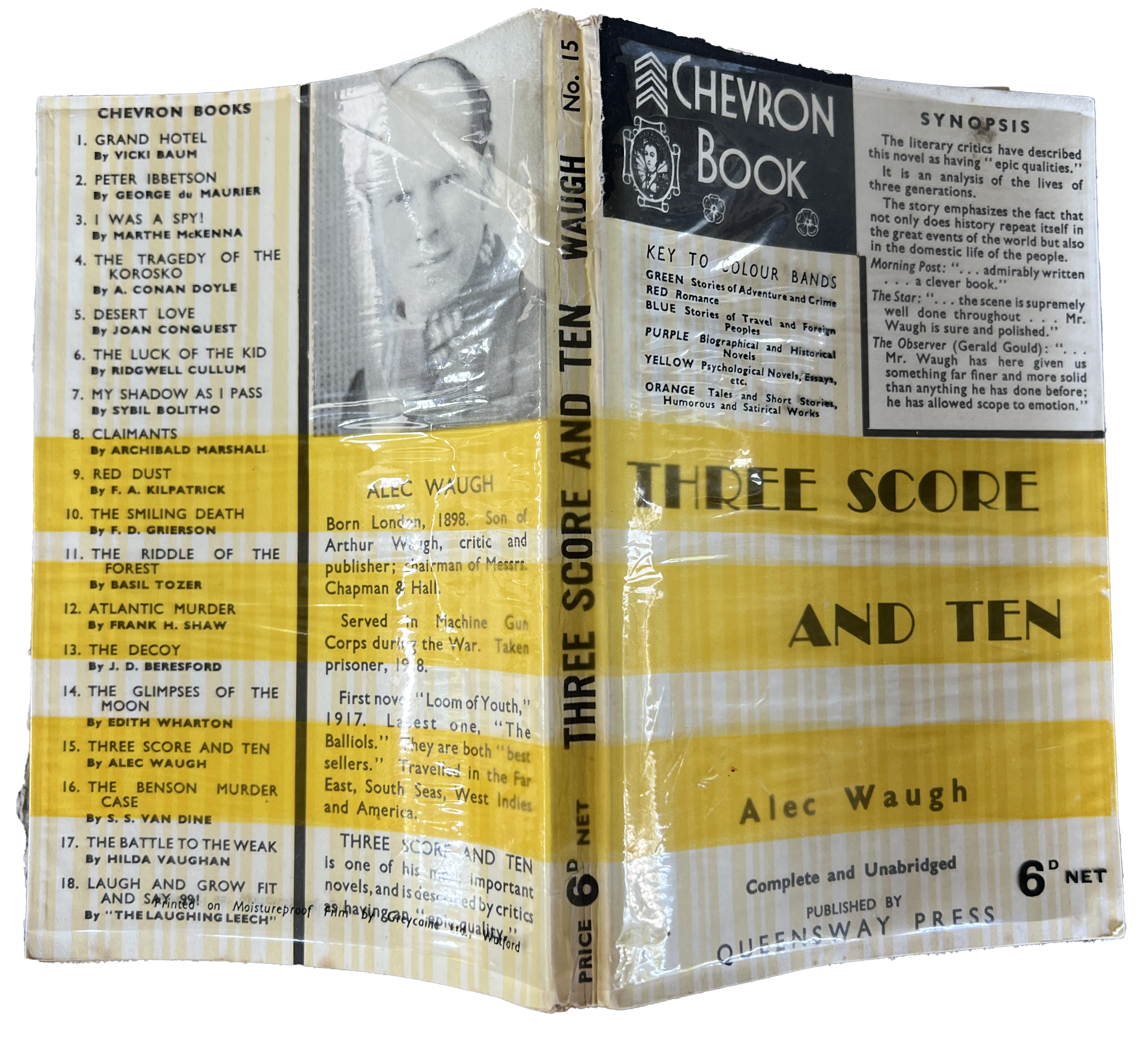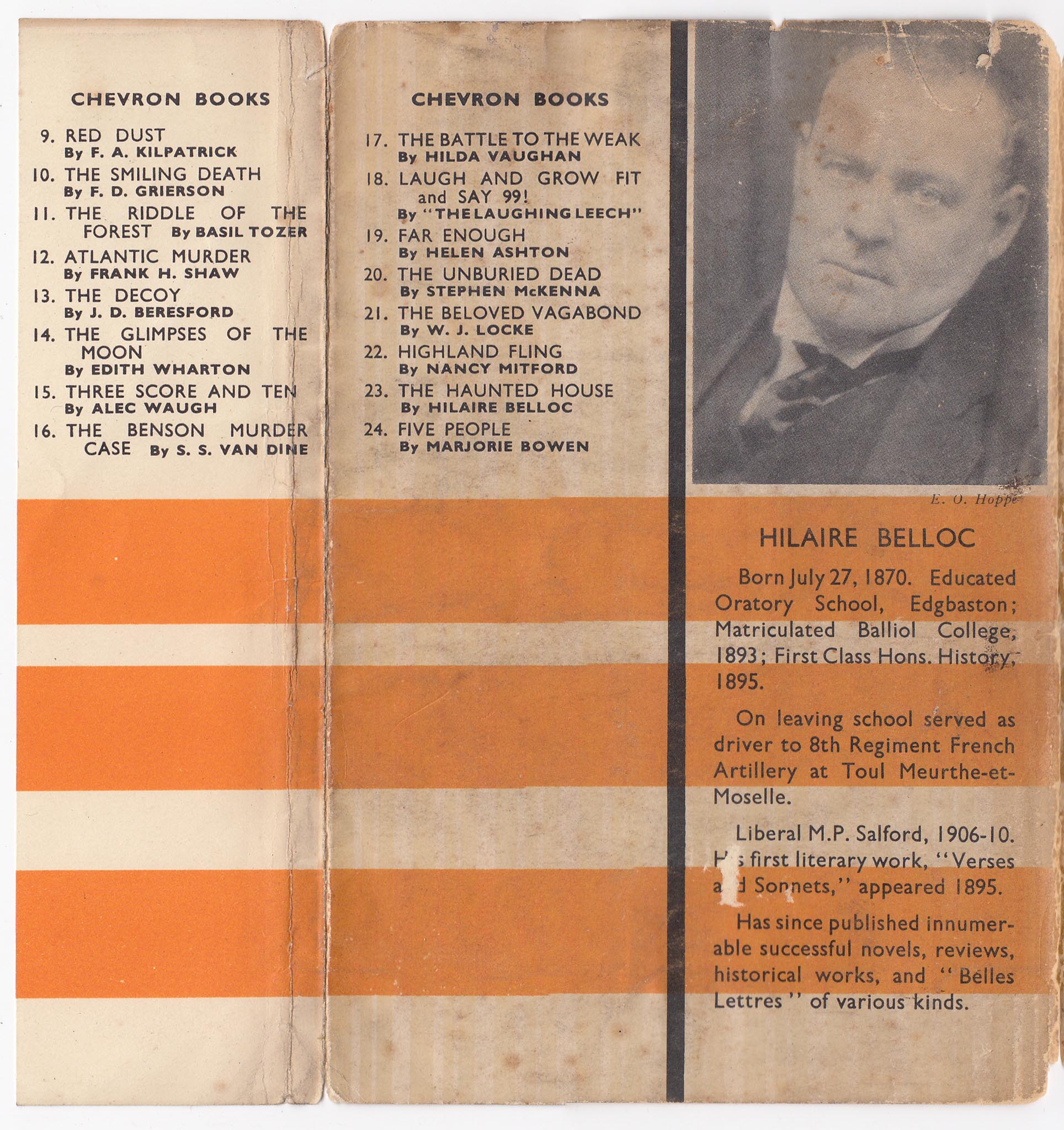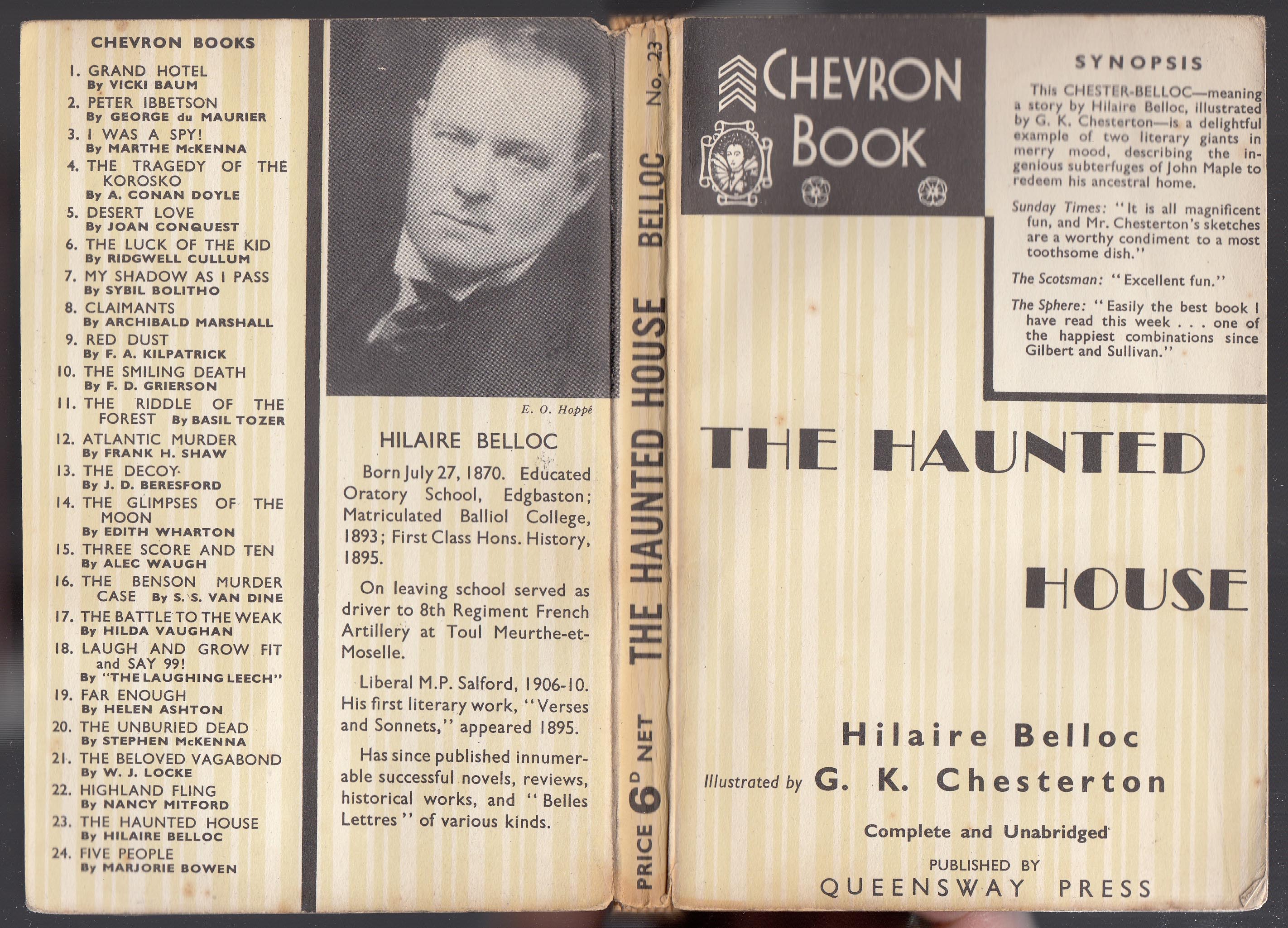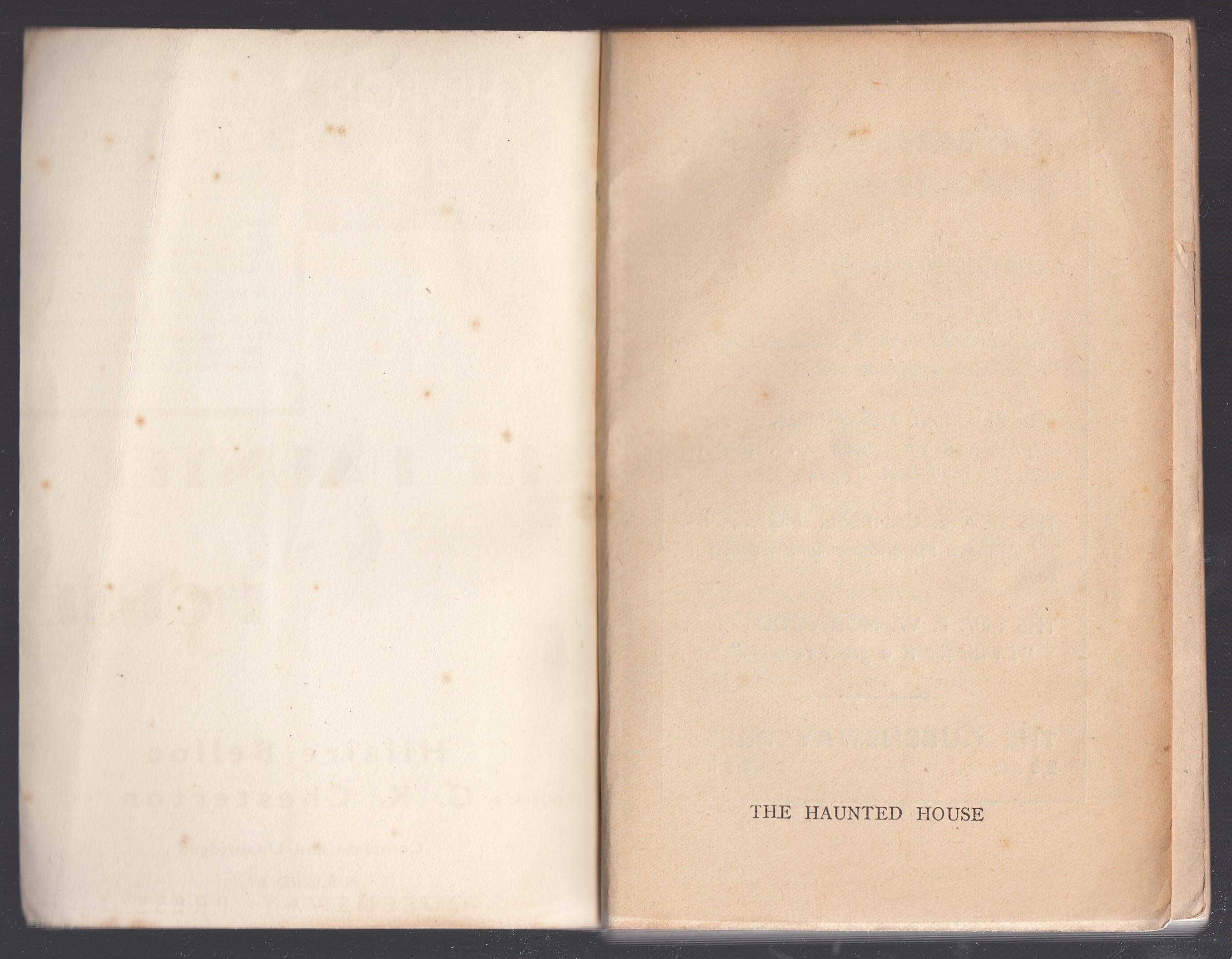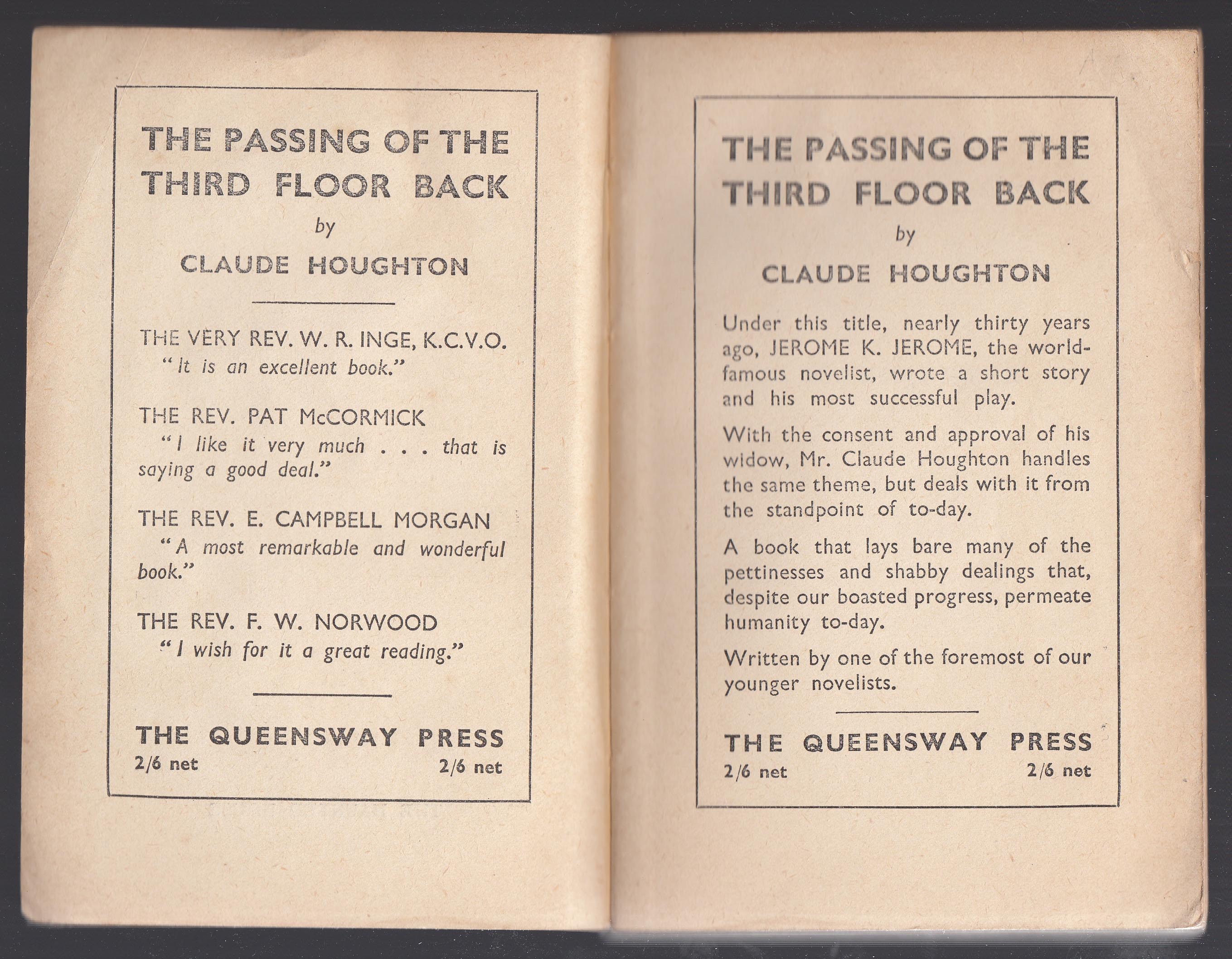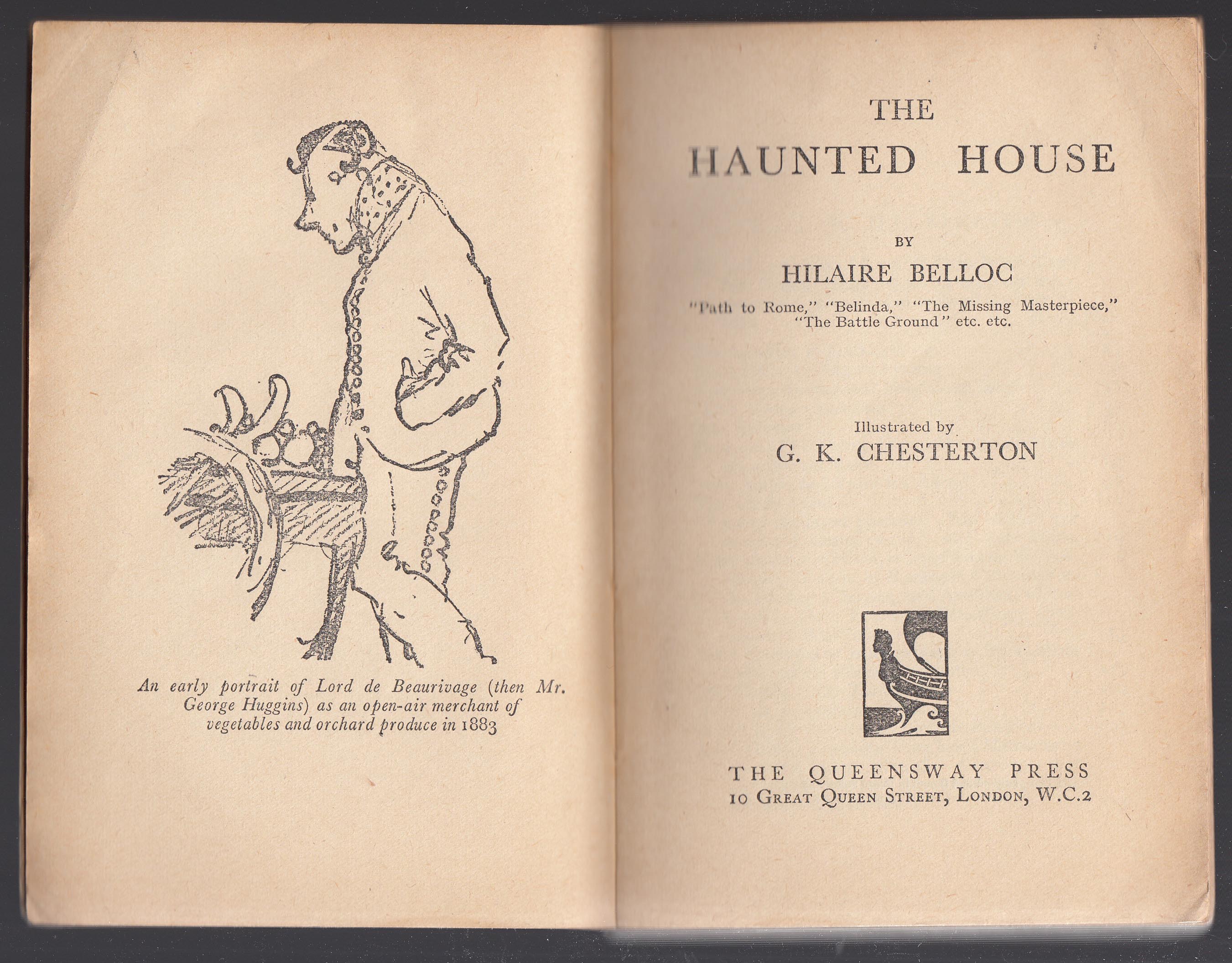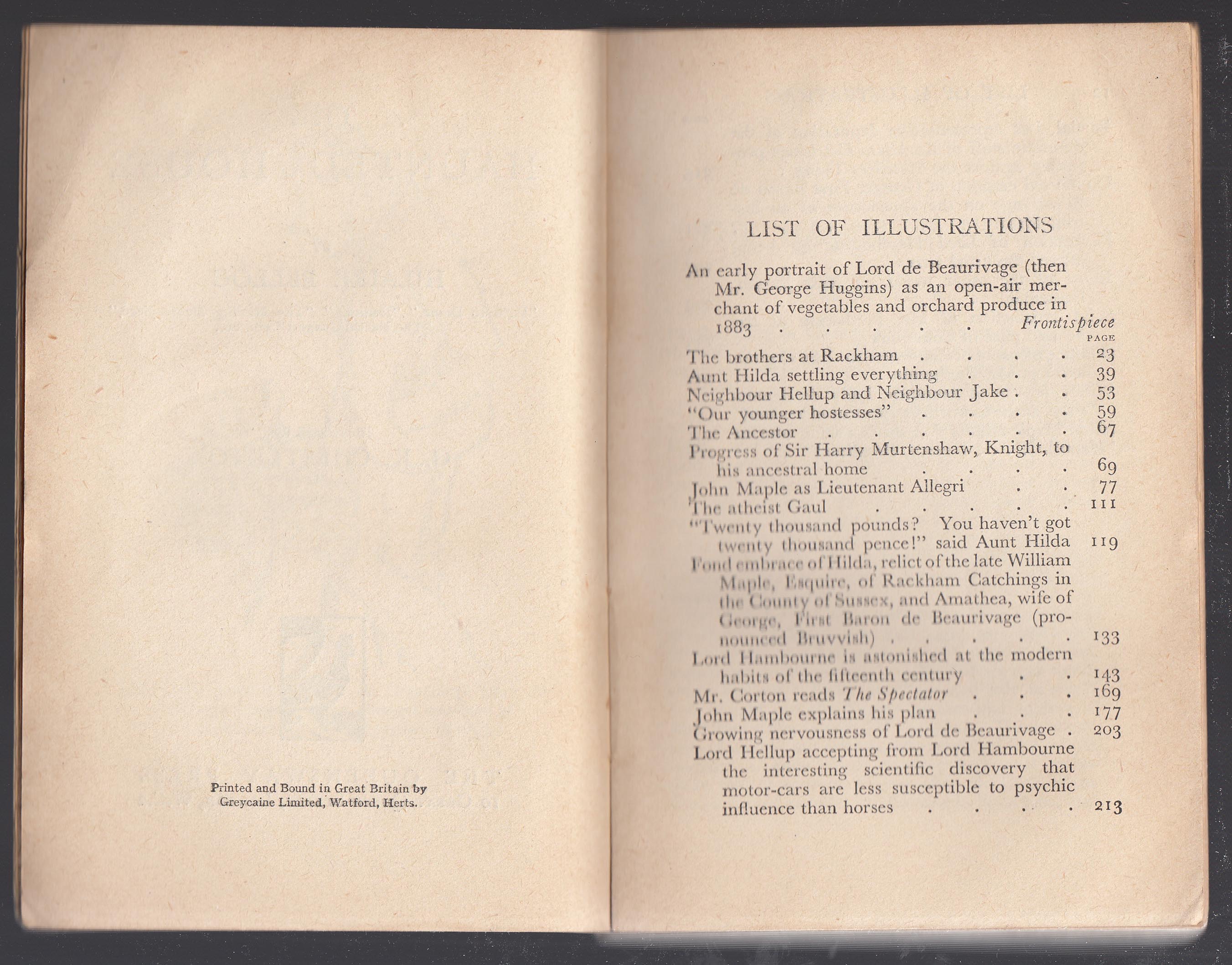Queensway Press (imprint of Readers Library Publishing Co. Ltd. (London, UK)
Series dates: 1936-1937 (New Chevron Series, 1937-1941)
Size: 4.5″ x 6.5″
Update: 6/14/24
“The Chevron Books have an entirely original and novel format. Every wrapper has color bands which indicate the type of story: red for romance, green for adventure, etc. etc.” (British Books, vol. 145, p. 841, 1936)
The “original and novel format” referred to by British Books is not the use of color-coded categories in a book series (that goes back to at least the early 1900s) but the form those bands took: they were printed on clear acetate and wrapped around the books. Fragile, undoubtedly more expensive to produce (than paper jackets), but certainly “novel.”
The acetate material, “Masterproof Film,” served as a transparent jacket, upon which was printed the “Key to Colour Bands,” the bands (front, back, and spine), the price (front of the book), and a statement: “Printed on Masterproof Film by Greycaine Ltd., Watford” on the back. The acetate is attached to the inside front and back covers with some glue. Masterproof is a name used by a printer-proofing material produced by DuPont, but this use of the name seems to be later (1980s). More research is needed on the material used on these early Chevron Books titles.
An entry at the Art of American Book Covers blog, “One More River, an Art Deco cover in transparent jacket,” discusses similar acetate jackets, called “Transmatic Dust Jackets,” issued in the 1920s.
The material has shrunk over time, leaving it shorter than the height of the book and making the statement on the back ride up over the bottom of the list of titles.
Below left shows the front cover, slightly bowed in an attempt to show the acetate covering. Below right shows the rear of the jacket, with the statement about the material across the bottom.
 |
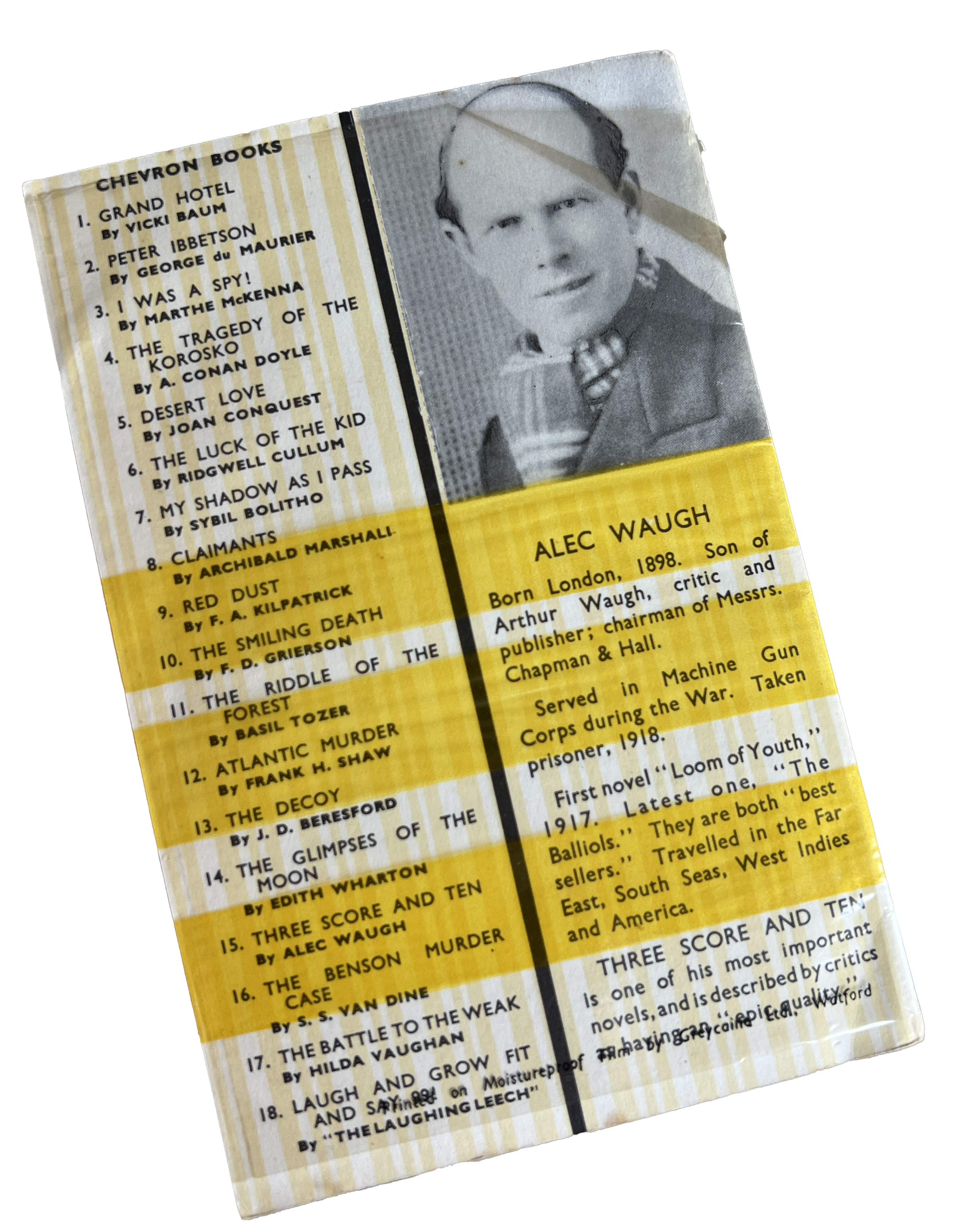 |
#1 through #24 of the Chevron Books were issued in 1936. According to Paperback Revolution, the acetate covers appeared on the first 18 titles. The acetate covers were then replaced by traditional paper jackets (with printed color bands). Six more titles (#25-#30) were issued in 1937 before the books and jackets were redesigned. Titles #31 to #114 were issued from 1937 to 1941 as the New Chevron Series. The New Chevron Series books were also 1/4 inch narrower.
The Chevron Books and New Chevron Series were the last gasps of the Readers Library Publishing Company, Ltd., established around 1924 by Derwent Hall Caine and Gordon “Ralph” Hall Caine (sons of author Hall Caine) to issue The Readers Library series. Books were manufactured by the Greycaine Book Manufacturing Company, founded by Ralph Caine and Frank Grey in 1908 or 1909. The Greycaine Co. (controlled by the Caine brothers and Frank Gray) provided most of the capital for the Reader’s Library. In essence, The Readers Library series was a way to generate work for the book printing firm.
The Readers Library books were hardcover but very cheap and made of low-grade paper and other materials. Millions of copies were sold. The series had often lurid, full-color, wrap-around illustrations on the jackets, which made them alluring and attractive to buyers. Some, such as Metropolis, demand high prices from collectors (only because of the jackets). The series was also known for its movie tie-ins and was one of the first reprint book series to take advantage of the emerging movie industry. The first movie tie-in book in the Readers Library was the 1924 edition of The Hunchback of Notre Dame, tied to a popular 1923 silent movie). Many of the books published in the series, even if they were not movie editions, were the basis of movies made in the teens and twenties.
When Allen Lane (who started Penguin Books) contacted Woolworths about stocking Penguin Books, Woolworth’s buyer said, “Readers Library is a better value. (“The Penguin Story: Sir Allen Lane’s 50 Years,” The Times (London), 22 April 1969).
Alas, the Readers Library series was greatly diminished by the mid-1930s.
In 1934, the Queensway Press imprint was established in London at 10 Great Queen St., close to the addresses used by the Readers Library Publishing Co. The Queensway Press issued hardcover and paperback reprints in 1934 using series names the Queensway Library and Queensway Classics (which only included Boccaccio’s The Decameron in four paperback volumes). A few other (non-series) books were also issued, but the firm’s focus shifted to the Chevron Books.
The initial design of the Chevron Books borrowed some elements from the modern, geometric design used by Penguin. However, the design went beyond the simplicity of Penguin books by using the color acetate jackets and littering the jacket and book covers with a significant amount of information, including a key to the color bands, a book synopsis, lists of titles in the series, and author information. As an innovator in book jackets as advertising (with the earlier Readers Library series), the Chevron Books clearly had a design philosophy: Penguin geometry with a barrage of textual advertising for the series. The design, however, did not stick. By the 19th title issued in the first year (1936) for the series, the acetate covers were gone, most likely a casualty of cost and fragility out in the bookselling environment. By 1937, the jackets and books were redesigned to align much more closely with the geometric design of Penguin, and the series was renamed in the process.
According to Paperback Revolution, the firm went into receivership in 1938. The receiver continued to operate the firm and print books, but no advertisements are evident, and the effort seems to be perfunctory at best. Paperback Revolution indicates that the firm was eventually acquired by the Hutchinson Group and the printing business by Taylor Garnett Evans and Co. Ltd. Hutchinson maintained the Readers Library and Queensway Press imprints until at least the 1950s (source). Some Readers Library and Queensway Press books also appear (sometimes with original artwork) in later Hutchinson paperback series.
Above: Alec Waugh’s Three Score and Ten was #15 in the series, one of the initial 18 titles with the acetate jackets. Yellow bands indicate “Psychological Novels, Essays, etc.” All 18 of the acetate-covered titles are listed on the back of the book. The book is not dated but is 1936 (the first of the two years this format of the Chevron Books was published).
The jacket below is from #23 in the series The Haunted House by Hilaire Belloc. This title was published in 1937, not long before the series was redesigned and reissued as the New Chevron Series.
The orange bands on the jacket below indicate this title is categorized as “Tales and Short Stories, Humourous and Satirical Works.” The jacket spine includes the series number, title, author, and price (6d, net). The jacket front is crowded with information besides the geometric bands. The upper right contains the series name with a chevron above a portrait of the queen. Two roses, representing the two English royal dynasties combined upon the cessation of the War of the Roses (and wedding of Henry VII and Elizabeth of York) are also included. A list of the “Colour Bands” follows, describing green, red, blue, purple, yellow, and orange. Blocked off to the upper right is a synopsis of the book. The title, author, and illustrator (author G.K. Chesterton in this case) are followed by “Complete and Unabridged” the publisher, and price. The front jacket flap lists Chevron Books #1 through #8. The colored bands continue from the front of the jacket.
The rear jacket flap contains Chevron Books #9 through #16. The back of the jacket #17 through #24. A portrait of Belloc and a brief bio fill the left half of the back of the jacket.
The book cover contains much of the information contained on the jackets. The spine is identical. The front of the book does not contain the color bands nor a description of the six color categories. The back of the book places the 24 titles in one list to the left of the author’s biography.
A list of books published in the Chevron Books series. This is a modified version of the list at Brass Penguin. I added full author names and the year of publication and fixed some typos.
Acetate dust jackets
#1. Vicki Baum, Grand Hotel (1936)
#2. George DuMaurier, Peter Ibbetson (1936)
#3. Marthe McKenna, I Was A Spy (ed., E.E.P. Tisdall) (1936)
#4. Arthur Conan Doyle, Tragedy Of The Korosko (1936)
#5. Joan Conquest, Desert Love (1936)
#6. Ridgwell Cullum, Luck Of The Kid (1936)
#7. Sybil Bolitho, My Shadow As I Pass (1936)
#8. Archibald Marshall, Claimants (1936)
#9. Florence Antoinette Kilpatrick, Red Dust, Etc. (1936)
#10. Francis Durham Grierson, The Smiling Death (1936)
#11. Basil Tozer, The Riddle Of The Forest (1936)
#12. Frank H. Shaw, Atlantic Murder (1936)
#13. J.D. Berseford, The Decoy (1936)
#14. Edith Wharton, Glimpses Of The Moon (1936)
#15. Alec Waugh, Three Score And Ten (1936)
#16. S.S. Van Dine, The Benson Murder Case (1936)
#17. Hilda Vaughan, The Battle To The Weak (1936)
#18. Laugh And Grow Fit by the Laughing Leech (1936) (Illustrations by Alfred E. Taylor)
Paper dust jackets
#19. Helen Rosaline Ashton, Far Enough (1936)
#20. Stephen McKenna, The Unburied Dead (1936)
#21. William John Locke, Beloved Vagabond (1936)
#22. Nancy Mitford, Highland Fling (1936)
#23. Hilaire Belloc, The Haunted House (1936) (Illustrations by G.K. Chesterton)
#24. Marjorie Bowen, Five People (1936)
#25. Claud Houghton, Passing Of The Third Floor Back (1937)
#26. Peter Traill, Some Take A Lover (1937)
#27. Mrs. Cecil Chesterton (Ada Elizabeth Jones), I Lived In A Slum (1937)
#28. Jerome K. Jerome, Three Men In A Boat (1937)
#29. Arnold Bennett, The Regent (1937)
#30. S.P.B. Mais, Eclipse (1937)
The series continues as the New Chevron Series, from #31: Marie Belloc Lowndes, The Lonely House (1937) to at least #114. Wallace Ellison, Escapes and Adventures (1941, with a Readers Library Pub. Co. imprint).
Continuing with the slight oddness of the series is the first half-title page, with the title near the bottom of the page. I can’t say I recall seeing another book with this title placement on the half-title page.
Following the half-title page are advertisements for a few additional Queensway Press titles.
The advertisements are followed by another half-title page:
An illustration from the book faces the title page. A publisher colophon (a ship’s bow) is included.
“Printed and Bound in Great Britain by Greycaine Limited, Watford, Herts.”
